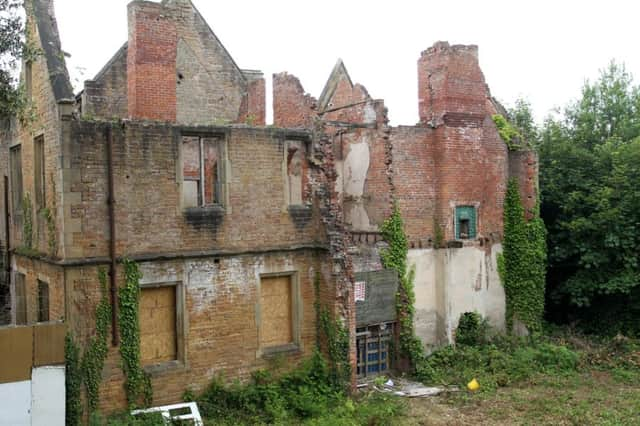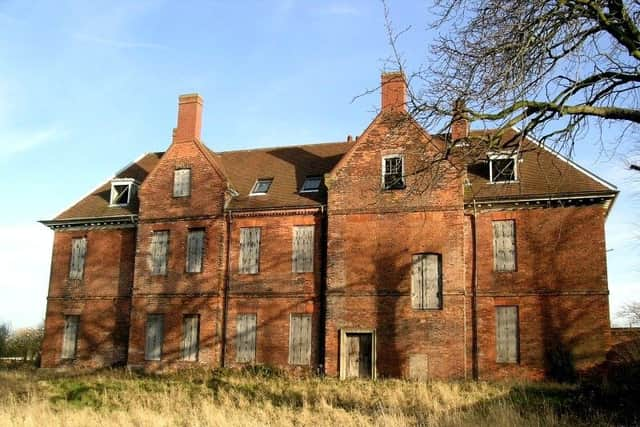Historic sites under threat


The list is compiled every year to highlight the work that needs to be done to ensure our heritage is preserved for future generations.
Mansfield’s Church of St John the Evangelist, on St John Street, is a new entry on the list due to roof problems.
Advertisement
Hide AdAdvertisement
Hide AdThe register states that its very high roof makes it difficult to maintain and it is suffering from ‘extensive nail fatigue’ meaning tiles frequently slip.


The Victorian church is judged to be at immediate risk of further rapid deterioration, but has been awarded a Heritage Lottery grant for development work following a fundraising campaign by church members.
Another church on the list is the Church of St Margaret on Church Hill in Bilsthorpe which is rated at the highest ‘at risk’ category.
This church has general masonry decay and deep open jointing is causing walls to become unstable. Improvements to rainwater drainage are also needed.
Advertisement
Hide AdAdvertisement
Hide AdOllerton Hall on Main Street, Ollerton, is slowly decaying after several changes in ownership in recent years.


The Grade II* listed former country house was sold to a developer who wanted to turn it into a care home but then carried out work that did not have planning permission.
Karen White, Newark and Sherwood District Council’s Director – Safety, said: “The council is concerned about the state of this listed building and the failure of the current owner to renovate it.
“As a consequence the council exercised an option to have Ollerton Hall transferred back to our ownership to safeguard its future. The present owner challenged this action, so the case was referred to arbitration.
Advertisement
Hide AdAdvertisement
Hide Ad“The decision of the arbitrator was in the council’s favour. We are now in the process of trying to complete the transfer of the hall so that the council can take ownership and be involved in its future preservation.”
Other prominent buildings in the area also make the at risk register.
Poet Lord Byron’s ancestral home Newstead Abbey has again featured because it is subject to slow decay, though repairs to the ruined West Front have been taking place.
The Cannon Fort and adjoining dock in Byron’s former backyard also make the list.
Advertisement
Hide AdAdvertisement
Hide AdSeventeenth century Annesley Hall is said to have a vulnerability level of ‘high’ because of a ‘lack of cohesive management and internal and external development pressures’. It also suffered a serious fire in May this year.
The engine house, chimney and headstocks of the former Pleasley Colliery feature on the register because ‘further substantial works are required’.
It underwent a major programme of repairs funded by the East Midlands Development Agency but is also in a state of slow decay.
Several conservation areas feature on the register including Old Bolsover, Nether Langwith and Ollerton and Boughton.
Advertisement
Hide AdAdvertisement
Hide AdMansfield’s Bridge Street is on the list because it is in a very bad condition and is deteriorating.
Mansfield district councillor David Smith, portfolio holder for cultural services, town and district centres, said: “The council has worked hard to ensure buildings, including the former printing works on Dame Flogan Street, are protected from the weather and unwanted access.
“Significant improvements to the streets and roads in Church Street, Bridge Street and Church Side have taken place in the past with the help of grant funding and Nottinghamshire County Council.
“It is recognised that more needs to be done to improve historic areas and the council is committed to continuing to work with the owners of buildings at risk to identify opportunities to improve the condition of these buildings and their surroundings.
Advertisement
Hide AdAdvertisement
Hide Ad“The Grade II listed Town Mill in Bridge Street is of particular importance and is being monitored closely. We are working with owners and partners to find ways of bringing it back into use.”
A third of all sites on the 2010 register have been rescued, which means Historic England has beaten its target of getting 25 per cent off the register over five years.
Across the next three years, it aims to take a further 750 sites off the register.
Duncan Wilson, Historic England chief executive, said: “This year’s register gives us the most complete assessment of the state of our nation’s heritage yet.
Advertisement
Hide AdAdvertisement
Hide Ad“It shows that we are making progress, but also that the challenge is still significant.”
“We are committed to working with local authorities, civic societies and everyone who is passionate about and values our heritage across England. The very things that make our regions special, are the things most at risk. If they’re lost, then a sense of that region is lost too.
“Together we can safeguard our most precious places and buildings for future generations.”